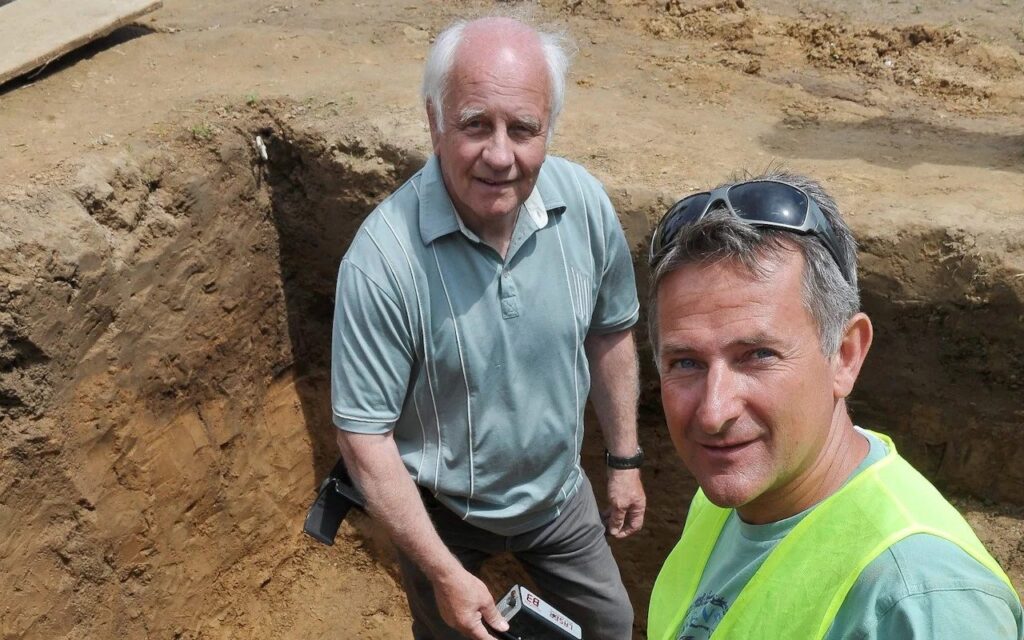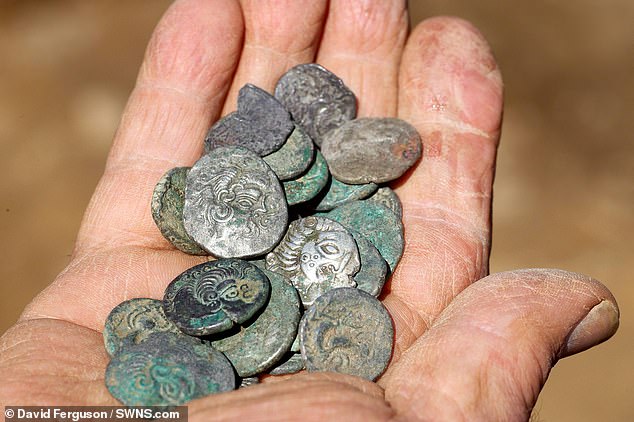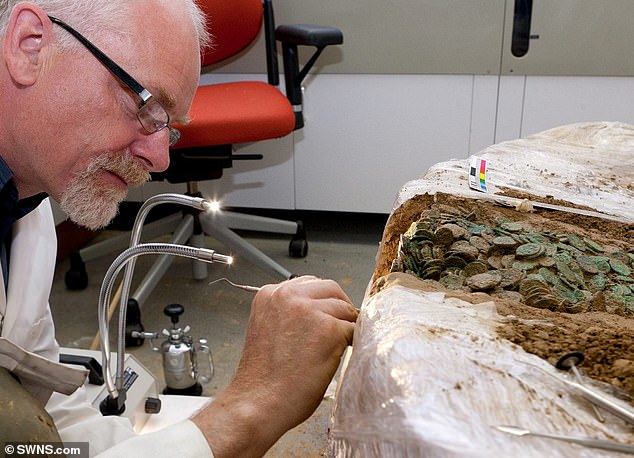Detectorists unearth record-breaking haul of 69,347 Iron Age coins after a 30-year search

The biggest coin hoards found in the British Isles are recorded by treasure hunters, after unearthing 69,347 Roman and Celtic coins that were buried three feet beneath a hedge in Jersey, Channel Isles.
Reg Mead and Richard Miles spent 30 years looking for the £ 10 million treasure in the field, after a woman described seeing what looked like silver buttons in the area.
Their find – made in 2012 – trumps the previous record-holding discovery of 54,951 Iron Age coins unearthed in Wiltshire in 1978.

Some of the silver and gold relics from the Guinness Record-setting discovery, dated to around 50BC, will go on display at La Hougue Bie Museum on the island.
‘We are not surprised at this achievement and are delighted that such an impressive archaeological item was discovered, examined and displayed in Jersey,’ said curator of archaeology at Jersey Heritage Olga Finch.
‘Once again, it puts our Island in the spotlight of international research of Iron Age coinage and demonstrates the world-class heritage that Jersey has to offer.’
Mr. Miles said he and Mr. Mead had been involved in the process the whole way through and described receiving the Guinness World Record certificates as ‘lovely’.
The coins were found to have been entombed in a mound of clay weighing three-quarters of a ton and measuring 55 x 31 x 8 inches.

They were declared a ‘treasure’ under the Treasure Act 1996, which means they officially belong to the Queen, although the finders are entitled to a reward.
Mr. Mead has said that the least valuable coins in the hoard are likely to be worth £100 each, suggesting a valuation of several million pounds, without taking into account the precious jewellery also found in it.
However, there has been discussion over whether the price would come down because so many coins had been found, reducing their rarity.
The previous largest coin hoard from Wiltshire was discovered in 1978 at the former Roman town of Cunetio near to Mildenhall.
The largest hoard of coins ever found in the world was in Brussels in 1908 with 150,000 silver medieval pennies from the 13th Century uncovered.





